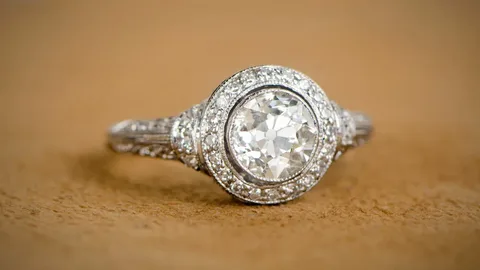
Antique engagement rings are a popular choice for women who prefer more intricate details that showcase a specific era. They’re also handcrafted, so they’re a more sustainable option than pre-made rings that are made along an assembly line.
Doyle recommends getting an antique ring cleaned and checked for loose stones at least 2-3 times a year. If you hear a slight rattling, that’s a sign that a stone has loosened.
They’re One of a Kind
In a world of mass-produced rings, antique engagement rings offer an authentic way to express your individuality and unique taste. These secondhand rings are crafted from materials that were in style during the time they were made, and reflect the artistry of their eras.
Each ring’s unique design is the first calling card of its era, from the intricate scrolling and flourishes of Belle Epoque jewelry to the geometric shapes of Art Deco designs. Other telltale signs include the type of gemstone used (diamonds weren’t the only option at the time), the cutting styles, and other details that help to pinpoint an era.
In addition, because these rings were handmade, each piece is unique. If you ever hear a slight rattling from your antique ring, it’s likely because one of the stones is loose and should be brought to a jeweler for repair. This is a great reason to choose an experienced and knowledgeable jeweler when buying an antique or vintage ring.
They’re Custom-Made
Antique and vintage rings are secondhand, which makes them a highly sustainable option for eco-conscious shoppers. This is because no new metal or stone is needed for the ring, so there’s less waste involved.
In addition, the diamond cut for antique and vintage rings was more individualized than it is now, so each ring is unique. This is different from modern diamond cuts, which are designed for mass production to ensure consistency.
For example, this Art Nouveau-inspired ring features an old mine cut center stone and feminine milgrain detailing, and dates back to 1910. If you’re a careful wearer, it will last another century or more, making it a true keepsake.
If you’re dreaming of an antique engagement ring, you can still find a unique heirloom today by shopping with a retailer that offers custom-made vintage styles. With the help of an expert, you can create a vintage style that’s personalized for your vision, budget and lifestyle.
They’re Sustainable
If your heart is set on an antique engagement ring, look to shop with brands that have a strong commitment to sustainability. The ethical and environmental impact of mining precious metals and diamonds is significant and should be considered when selecting an heirloom piece for your bride-to-be.
Purchasing pre-loved jewelry reduces the demand for new pieces, reducing the need for mined materials and minimizing pollution. Vintage and antique rings are often made with recycled precious metals and can also be made from conflict-free, repurposed stones.
The sustainable engagement rings from Catbird, for example, use pearls from a third-generation clean-water practice farm and fair-trade gold. The maker also gives back through their giving fund to support organizations like Black Lives Matter and Planned Parenthood. Similarly, Sofia Kaman is committed to transparency and offers a variety of beautiful standout designs with ethically sourced natural gemstones and conflict-free diamonds. The company uses recycled gold and metals and sources its diamonds through suppliers that adhere to the Kimberley Process.
They’re Authentic
It’s important to note that when shopping for an antique engagement ring, it’s essential to buy from a trusted jeweler. Some jewelers produce vintage recreation rings that don’t maintain their authenticity.
Authentic antique engagement rings come from a variety of different jewelry design periods. A few of the most popular eras include Victorian (1839-1901), Edwardian (1901-1914) and Art Deco (from 1920-1935).
Each era has its own unique characteristics. For instance, Victorian rings often featured intricate metal work that resembled natural themes like leaves and flowers. This particular design feature was referred to as repousse. This era also saw the advent of cushion-cut, transitional cut and antique Asscher diamond cuts. It’s also worth mentioning that these rings were often worn in conjunction with wedding bands. If you plan to wear an antique engagement ring with a band, make sure it’s made of the same metal purity (like 18k gold) so they don’t scratch each other. This will also help preserve the ring’s heirloom value.